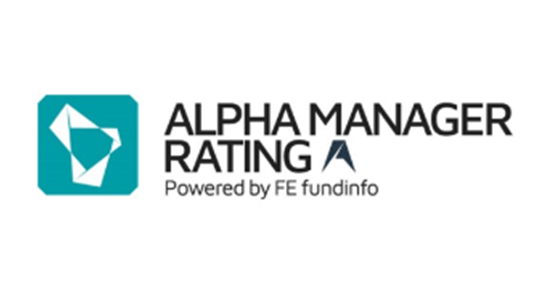Last year’s discussion paper (DP) on Sustainability Disclosure Requirements (SDR) and investment labelling was expected to be followed by a consultation paper (CP) by the middle of this year. This then became September and the CP finally appeared in late October. But to be fair to the FCA, it was worth waiting for.
Let’s look back at the Discussion Paper
The DP proposed some high-level consumer-facing disclosures, backed up by more detailed disclosures at both a product and entity level for those who want more. It also proposed a set of labels for all funds to show where on the sustainability continuum they sit, from “not promoted as sustainable” to “impact”. While the FCA “recognise the important role that financial advisers play in providing consumers with sufficient information”, they parked that one, saying they “will develop proposals on this in due course”.
In addition, the FCA set up the Disclosure and Labelling Advisory Group (DLAG), which, as the name suggests, helped them work through the disclosure and labelling proposals.
The most obvious change between the DP and CP is to the fund labelling regime. Gone are the non-sustainable labels and only three categories of funds will carry labels: “sustainable focus”, “sustainable improvers” and “sustainable impact”. While “impact” is reasonably understood, you have to agree that the others are clearer than the earlier suggestions of “aligned” and “transitioning”.
It is clear where the FCA is coming from, as they say, “we are proposing new rules to help consumers … navigate an increasingly complex investment product landscape, protect them from greenwashing, and rebuild trust.” It is clear throughout the CP that the labels, the naming restrictions and the disclosures are all about combating greenwashing; the FCA is even bringing in a “general anti-greenwashing” rule, reinforcing the existing requirement to be clear, fair and not misleading with any sustainability claims and for any claims to be proportionate to the sustainability profile of the fund.
How to qualify for the labels
The fund labels are not hierarchical (in the way that many see Article 6, 8 and 9 funds under the EU’s Sustainable Finance Disclosure Regulation (SFDR)) but are “designed to deliver a different profile of assets, and to meet different consumer preferences”. While the SFDR was not intended to be a classification system, the SDR most definitely is.
All three labels must meet five principles:
- Principle 1, Sustainability Objective. A sustainable investment product must have an explicit environmental and/or social sustainability objective.
- Principle 2, Investment Policy and Strategy. A firm’s investment policy and strategy for the sustainable investment product must be aligned with its sustainability objective.
- Principle 3, Key Performance Indicators. A firm must specify credible, rigorous and evidence based KPIs that measure a sustainable investment product’s ongoing performance towards achieving its sustainability objective.
- Principle 4, Resources and Governance. A firm must apply and maintain appropriate resources, governance and organisational arrangements commensurate with the delivery of the sustainable investment product’s sustainability objective.
- Principle 5, Stewardship. A firm must maintain its active investor stewardship strategy and resources (at firm-level or product-level) in a manner consistent with the sustainable investment product’s sustainability objective.
The five principles are underpinned by a set of key cross-cutting considerations and the first three also have category (ie label) specific criteria. Not surprisingly, the longest list of criteria is for the KPIs for “sustainable improvers”, as not only must the targets be set out, but also progress against those targets.
In line with the suggestion in the DP that SFDR Article 8 funds, which “promote environmental or social characteristics”, might map to “responsible” (ie not sustainable) as well as “sustainable transitioning” labels, the CP is clear that an Article 8 fund won’t automatically qualify for a sustainable label in the UK and “will need to ‘level up’ to meet our criteria by specifying a sustainability objective”.
Alongside the new labels is a restriction on fund names. Having removed the requirement for funds to say when they are “not promoted as sustainable”, the CP introduces a ban on funds without a sustainable label from using terms including “ESG”, “green”, “sustainable”, “climate” or “any other term which implies that a…product has sustainability characteristics” either in the name or in any fund marketing.
Of course, the naming restrictions can only apply to UK-authorised funds, so the FCA will require distributors to post a statement that “This product is based overseas and is not subject to FCA sustainable investment labelling and disclosure requirements” where they contain any of the banned terms.
Disclosures
The FCA has stuck with the original concept of high-level consumer-facing disclosures, supported by more detailed pre-contractual and periodic disclosures. The difference now is that not all funds will have a label, so the FCA requires consumer-facing disclosures for all funds, with the additional disclosures only for those with a sustainable label. Inevitably, funds without sustainability considerations will be “more limited”, although funds may have sustainability-related features without qualifying for a label, and this is where they should be highlighted.
Consumer-facing disclosures will include the sort of information you would expect, such as the product’s sustainability objective and approach, and the metrics used to achieve the objective. In addition, it must disclose “the types of holdings that the firm would reasonably expect consumers of the product to find ‘surprising’ … and an explanation as to why it is held in the product”, which should go a long way to answering questions around why an airline, a fossil fuel company or a construction company may be included.
The ongoing reports should include sustainability-related metrics based on the TCFD product report, while the FCA has again said it will keep an eye on the International Sustainability Standards Board (ISSB) standards being produced to see about additional metrics.
Finally, all asset managers will be required to produce an entity-level sustainability report, building on the TCFD entity report and based on the four pillars in the TCFD recommendations of governance; the strategy for disclosing actual and potential impacts of sustainability related risks and opportunities; management of sustainability related risks; and the metrics and targets used. Again, there is a key difference from the SFDR requirements, as there is no requirement to disclose principal adverse impacts (PAIs).
Distributors are being further brought into the fold by a requirement to publicise sustainable labels, where appropriate, and to make the consumer-facing disclosures available to retail investors, which are also in line with their obligations under the Consumer Duty. Other than that, any plans for rules on sustainability as part of suitability assessments by financial advisers (as in the EU under MiFID rules) continue to be parked until an unspecified future date.
When does all this take effect?
The consultation closes on 25 January 2023 and the FCA has said it then plans to publish its Policy Statement (PS) by the middle of the year. The rest of the implementation dates are all predicated on meeting that date of 30 June.
The general anti-greenwashing rule will come in immediately on publication of the PS, while the restriction on terms used in fund names and marketing will take effect a year later (30 June 2024), at the same time as the new fund labels, consumer-facing disclosures and detailed pre-contractual disclosures.
The ongoing product-level disclosures will be required a further year after that, by 30 June 2025, as will the entity-level disclosures for firms with over £50bn in assets under management; those for firms with between £5bn and £50bn AUM will start another year later, by 30 June 2026.
Given the FCA’s stated aim to combat greenwashing and rebuild trust, the proposed measures, while not perfect, should go a long way towards achieving that. But the time to each deadline will go quickly and fund groups should look to start work soon, given that it is inevitable that the vast majority of the proposals will still be there come the Policy Statement.
As with all matters around sustainability, these disclosures will take time to settle down, but the FCA is keen “to address potential harm as early as possible”, hence the general anti-greenwashing rule. We believe groups would be well advised not only to consider their fund names and marketing material as soon as possible, but also to start incorporating statements and data that could form part of their consumer-facing and pre-contractual disclosures. This would give both advisers and consumers time to get used to the language being used, while also showing evidence of good product governance.
FE fundinfo's TCFD reporting solution allows you to future-proof your ESG reporting mandates in the UK and ensures you comply with TCFD disclosure requirements at both a product and entity level.


